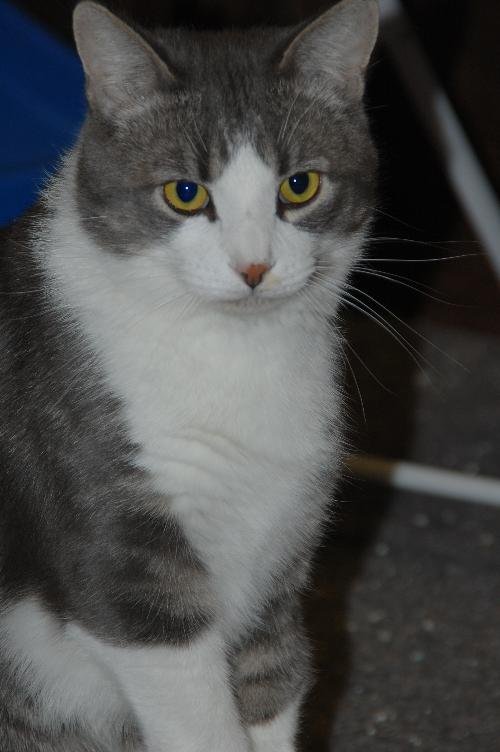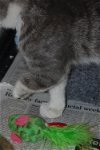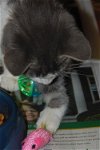|
Northeast Animal Rescue
|
HomeAnimalsAbout UsContact Us | |
|
Duffie's Web Page

Name: Duffie
Status: Adopted!
Adoption Fee: 100.00
Species: Cat
Breed: Domestic Short Hair (short coat)
Color: Gray and White Tabby
Pattern: Tabby
Sex: Male (neutered)
General Potential Size: Large
Current Age: 12 Years 2 Months (best estimate)
Activity Level: Highly Active
Indoor or Outdoor: Indoor Only
Good with Dogs: No
Good with Cats: Yes
Good with Kids: Yes
Declawed: No
Housetrained: Yes
Special Needs: RADIAL HYPOPLASIA AND FEMORAL HYPOPLASIA
Copyright 2006-2011, Sarah Hartwell
Hypoplasias are failures of bones to grow properly. The most famous form in cats is Radial Hypoplasia or the “Twisty Cat” mutation; a disabling condition where the forelegs are abnormally short and twisted. Femoral Hypoplasia is reported much more rarely and is the failure of the long bones of the hind leg to grow properly. This page provides a summary of the two conditions. Information on caring for cats with mobility problems can be found in Caring for Disabled Cats.
RADIAL HYPOPLASIA
Radial hypoplasia (also known as radial agenesis) is the "thalidomide" or "twisty" mutation in cats. Historically, it has also been called foreleg micromelia. It is usually called by its acronym “RH”. It causes the radius – one of the two parallel long bones in the lower foreleg (between elbow and wrist) – to be unusually short. In severe cases, the bone is almost absent. The paw appears to be attached to the elbow. The humerus – the long bone in the upper foreleg – may also be unusually short so the paw appears to be attached close to the shoulder. Although it crops up from time to time through random mutation, RH became more well known when an individual deliberately bred several cats with this affliction and dubbed them “Twisty Cats” (Twisty Cats and the Ethics of Breeding for Deformity). They have also been dubbed Kangaroo Cats.
RH is known in full as triphalangeal pollex-radial hypoplasia and is caused by a dominant gene (only one copy is needed for the trait to show up). It is variable in severity. “Triphalangeal pollex” means the thumb (pollex) has three toe bones (phalanges) instead of two. This is an important diagnostic for breeders of polydactyl cats as cats with three-boned thumbs may produce kittens with hypoplasia (underdevelopment) or aplasia (absence) of the radius.
Description:
Our website is updated daily Duffie is neutered, UTD on vaccines and tested negative for FIV/FeLV. Approx. DOB is Feb 2012. If you're interested in adopting Duffie, please fill out an application at www.nar.rescuegroups.org.
|



























